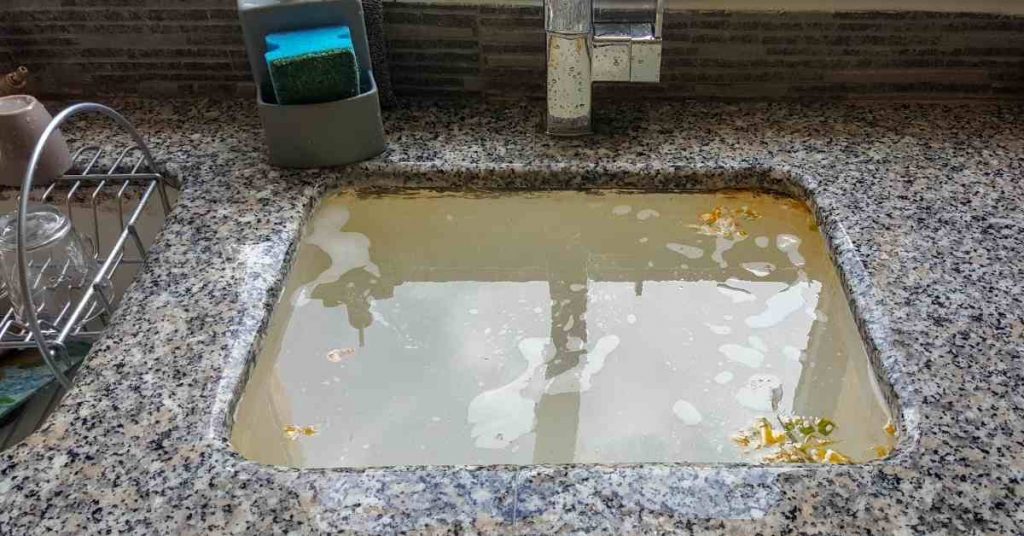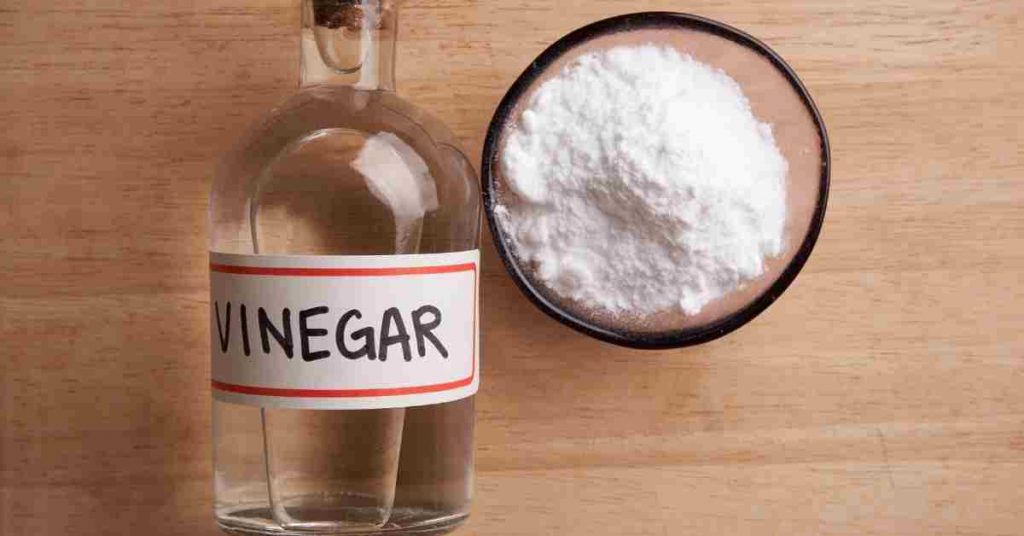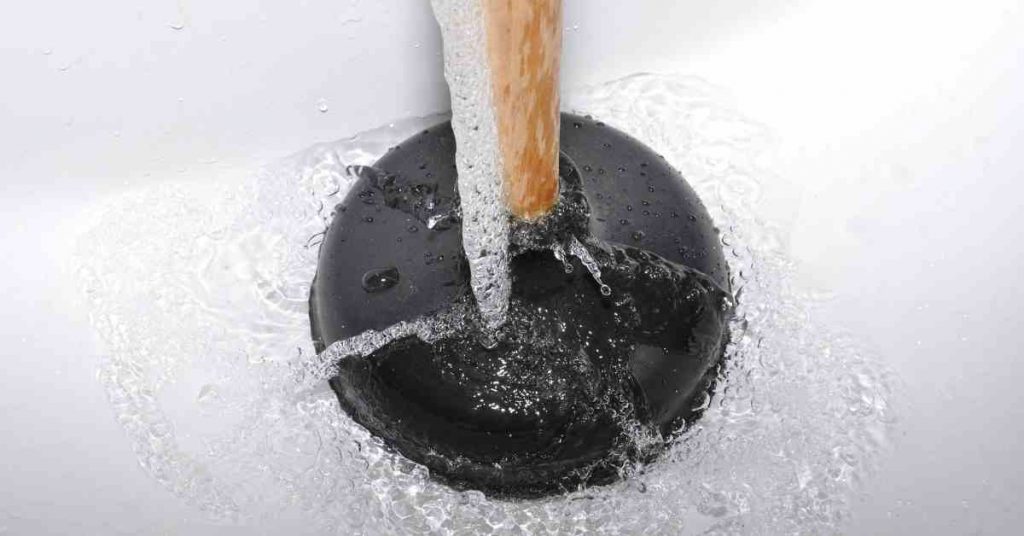
If Drano or a similar chemical drain cleaner doesn’t work to clear a clog in your plumbing, consider the following steps:
- Safety First: Always prioritize safety. Avoid using additional chemicals that could react with Drano. Wear protective gear, including gloves and eye protection, and ensure proper ventilation in the area.
- Plunge: Try using a plunger to create suction and dislodge the clog. Ensure a proper seal over the drain and use firm, consistent pressure when plunging.
- Remove the Trap: Under the sink, you can often find a U-shaped pipe called a P-trap. Place a bucket or container beneath it, then carefully remove and clean the P-trap. This can help remove clogs caused by debris buildup.
- Use a Plumbing Snake: A plumbing snake or auger can reach deeper into the pipes to break up and remove clogs. Insert it carefully and follow the manufacturer’s instructions.
- Check Vent Pipes: Clogs can also occur in vent pipes that allow air into the plumbing system. If other methods fail, consult a professional plumber to inspect and clear vent pipes.
- Avoid Harsh Chemicals: Refrain from using multiple chemical drain cleaners or homemade concoctions, as these can lead to dangerous reactions and potentially damage your plumbing.
What to Do if It Doesn’t Work
Of course it is not the end of the road for you if Drano fails to work. And it doesn’t mean you have to call a plumber at that point.
There are still a few DIY methods you can do to clear the clog. Here are some of the ways to clear a clog if Drano doesn’t work:
1. Use Baking Soda, Vinegar and Boiling Water

Baking soda and vinegar have been used together to successfully unclog drains for many years. Apart from that, they are fantastic cleaning agents.
Baking soda is an alkali while vinegar is a weak acid. When the 2 substances are mixed together, a fizzing reaction takes place. It is this reaction that breaks up the clog.
While the reaction between baking soda and vinegar is what breaks up the clog, boiling water speeds up the process and even melts the clog further.
Sometimes boiling water alone is enough to clear drain clogs especially in kitchen sink, bathroom sinks and bathtub/shower drains.
Needless to say, the majority of the clogs in these drains are caused by hair, oils, grease, shampoo and basically other organic waste coalesced together. Boiling water will melt the ball of clog and effectively clear the drain.
The baking soda, vinegar and boiling water combination however works just so well. Here is how to do it.
- Start by draining the standing water. You want the combination to work directly on the clog. You will therefore need to drain the water by either scooping it with a cup and emptying it in a bucket or sucking it up with vac. Sometimes the vac can end up unclogging the drain.
Note! Be careful since the water has Drano in it and could burn your skin or irritate your eyes when it comes into contact. Also, avoid using other chemical drain cleaners since a reaction will take place between it and Drano resulting in toxic fumes which could damage your lungs when inhaled.
- Pour 1 cup of baking soda down the drain.
- Follow it up with another cup of vinegar.
- Wait for about 15 minutes or even longer for the solution to work out its magic. Meanwhile, start heating 1 gallon or more of water.
- Dump the boiling water in the drain and check what happens.
In most of the cases, the fixture will initially drain slowly but after the water has melted the majority of the clog the water will drain out faster.
Tip! Make it a habit of pouring boiling water down your drains every now and then. That simple act prevents clogs from forming in your drains. Also, clean the drains using baking soda and vinegar once every 2 weeks. Do not however pour boiling water in a toilet lest it cracks.
2. Plunge the Drain

A plunger is a simple tool but it will clear drain clogs most of the time when used correctly. But how do you plunge effectively?
Effective plunging starts with the selection of a plunger. There are 2 main types of plungers. The first one is the flat-bottomed or cup plunger which is used to unclog sinks, tubs, showers and other such drains.
There is then the flange plunger which is bell-shaped and purposely designed to unclog toilets. Choose your plunger depending on where the clog is.
Whenever plunging a sink or bathtub, remember that they have an overflow drain which is connected to the main drain line. You should therefore start by sealing off the overflow drain.
If you have 2 plungers you can use one to seal the overflow but you can also use a piece of rag. Failure to do that will have the pressure generated by the plunger escaping through the overflow instead of pushing the clog.
To plunge successfully, also make sure you have some water inside the fixture you are unclogging. The bottom of the plunger needs to be immersed in the water to create a tight seal.
Start by plunging gently in order to avoid splashing water and to also engage the plunger on the drain opening. After the first 5 plunges, start plunging aggressively for a few minutes.
Lift off the plunge and check if the water will start to drain out on its own which is a sign that the clog has cleared. If not, plunge some more.
3. Snake the Drain

If you are dealing with a clogged toilet, you will need to select a toilet auger which is specially designed to unclog toilets. You however need to be careful not to scratch the bowl or damage the pipes.
Note! You should never use Drano to unclog toilets. The heat produced during the chemical reactions is enough to crack the toilet bowl.
If you are unclogging a sink, bathtub or shower drain, you do not even need to use the usual plumber’s snake. There is a special plastic snake called a drain hair removal tool or zip-it tool (Amazon) which is very effective in removing hair clogs from drains.
You may want to first remove the shower drain cover or tub stopper in order to gain access to the drain line. The same also goes for bathroom sink stoppers.
To use this tool you will only need to stick it inside the drain line, twist it and then pull it out. You will repeat that several times until you have pulled out most of the hair.
I will however want to warn you that the hair pulled from a clogged drain will gross you out so be ready for it.
After cleaning the drain with the tool, blast hot water down the drain to flush out any strand of hair that is still clinging on the pipes.
Tip! If you do not have a snake, a wire coat hanger will come in handy. Just straighten and make a hook on one end. Use the hook to fish out the gunk from the drain line.
3. Remove and Clean the P-trap
If you are dealing with a clogged bathroom or kitchen sink, there is one thing you can do that is almost guaranteed to fix the problem.
That thing is removing and cleaning the drain trap also known as a P-trap. A P-trap is the U-bend under your sink.
A P-trap’s job is to hold water at all times, thereby preventing sewer gases from coming up in the house, and to also trap clogs preventing them from clogging the drain line further away.

Most of the times when you have a clogged sink, the clog is usually inside the P-trap. Removing and cleaning the P-trap is easy and will fix the problem for you. This is how to do it:
- Place a pan or bucket under the P-trap. You do not want the water in the P-trap to spill on your floor.
- Disconnect the P-trap. Plastic traps can be disconnected by hand while metallic ones will need a wrench.
- Clean the P-trap using warm soapy water to remove the entire gunk inside it.
- Do not forget to also inspect and clean the pipe heading out through the wall and also the tail-piece connecting the P-trap to the sink drain opening.
- Once the trap is clean, connect it back and blast the line with hot water to flush out any other solids and to also make sure the P-trap is not leaking.
5. Call a Plumber
When you have tried everything but the clog won’t just budge, it is time to call a professional plumber.
Plumbers have the tools and the expertise to clear drains and have seen worse clogs than the one you have. Needless to say, plumbers are not cheap but sometimes you have to pay for professional help.
And basically that is what if Drano does not work. I hope you found great value in this post.
